About the Blog: In our last blog, we had written about the Changpas, the semi-nomadic tribe living in the stark and cold Changthang region of Ladakh. We met with them while on our way towards Tso Moriri Lake. We were actually unable to complete our trip because of heavy snowfall, but we had spent a couple of days with a Changpa family. The previous blog was all about the life of the Changpas and the famed Changthangi or Pashmina goats. In this blog, we are going to share about experience n Changthang Valley and our (second) failed excursion to Tso Moriri, being stranded in snow for 2 days and the experience of staying with a Changpa family.
I was excited. This trip to Ladakh was turning out to be unimaginably brilliant. After our Zanskar road trip, I expected to be tired and relax in Leh for a couple of days. On the contrary, we were bubbling with enthusiasm and were ready to take on whatever challenge the roads of Ladakh threw at us.

It had to be Tso Moriri. The last 2 times we were in Ladakh, we could not visit Tso Moriri. Further, I was intrigued about the life of the Changpa tribe living in the Changthang highlands of eastern Ladakh. I wanted to know about the Pashmina goats, known as the Changthangis that produce the beautiful and fluffy wool that goes into making the luxurious Pashmina shawls. I wanted to know how these people live in such harsh conditions rearing the livestock, that make other forms of livelihood nearly impossible. So, Tso Moriri it was! It would give us a chance to explore this beautiful lake as well as sneak a peek into the life of the Changpas.
Trip to Changthang Valley in Ladakh

We started early from Leh taking the shortest route towards Tso Moriri via Chumathang. The weather was bright and sunny as we left Leh. We crossed Hemis and then stopped at Upshi for a quick breakfast. However, the sky started turning cloudy as we left Upshi.

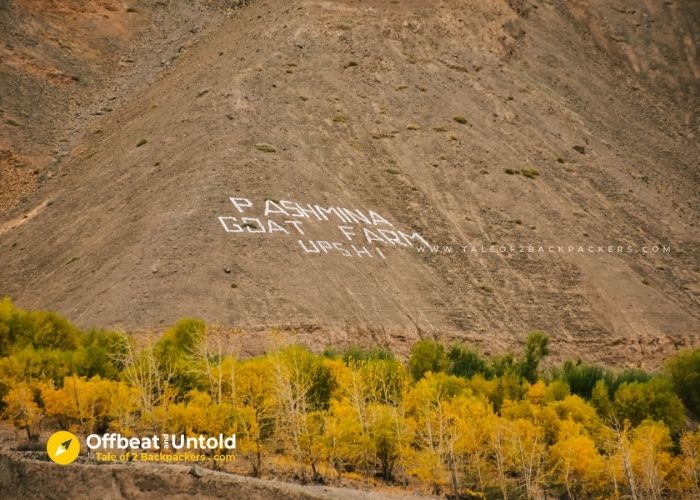
They say that you cannot predict the mountain weather. By the time we reached Chumathang, it was totally cloudy and had started drizzling. The warm and sunny morning in Leh gave way to a bleak and cold day at Chumathang.
Chumathang
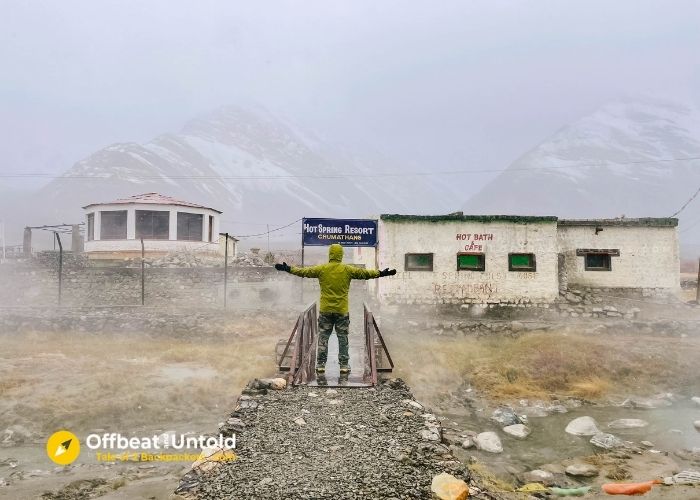
Nevertheless, we stopped at Chumathang to visit the Chumathang Hot Springs. There is a small signboard pointing to the direction of the hot springs. It is quite easy to miss it if you are not paying attention.
Just by the bank of the Indus River, there are the pockets of boiling water. The smell of sulphur was omnipresent in the area. Fumes coming out of the hot water seem to mingle with the mist around. We went around, took some pictures and came back to our car. It had started raining by that time and we were literally frozen with only our jackets.

Chumathang has a few basic homestays, for those who want to stay the night at the place. There is also a monastery nearby. We went inside a small restaurant and had hot coffee to get ourselves warm. It was that time when I missed having a pair of gloves! Who knew it would start raining after such clear weather for the last few days?
Towards Tso Moriri in Changthang?

We started from Chumathang, and we continued on our way towards Tso Moriri. It was another 85 km drive from the place. I looked outside at the beautiful landscape of Ladakh. The terrain was stark, but beautiful. miles of kaleidoscopic mountains rushed by us. Everything looked grand and overwhelming.

By the time we reached Mahe Bridge, it had started snowing quite heavily. I was reminded of our Yumthang Valley trip which had become a winter wonderland after a bout of snowfall. But this snowfall seemed more intense. We could practically see nothing in front of us. The roads were covered with snow and we had to drive really slowly. We prayed to all the gods so that we could reach Tso Moriri.

There was a checkpost right before Mahe Bridge that was supposed to check our permits. However, nobody was present at the checkpost. It seemed that the snowfall was the reason for the absence of people there. So, we simply drove on without showing our permits and crossed Mahe Bridge.
Reaching Sumdo in Changthang

Soon we reached Sumdo, a small settlement in Changthang. By the time we reached Sumdo, it was snowing hard. Fresh snow had accumulated on the road everywhere.
There is a small eatery at Sumdo where we stopped to have tea. Tashi also wanted to know about the condition of the road to Tso Moriri. It is after Tso Moriri that the ascent to Namshang La starts. After crossing the pass, there was a dirt track till Korzok. If there is snow on the road, it would be difficult to drive.

We saw a couple of cars returning from the road that led to Tso Moriri. On asking, we found out that these cars were not allowed to go by the army. It had snowed so much that it was quite impossible to travel. These cars were planning to return back to Leh.
It was almost after noon. We had a Maggi lunch at the eatery in Sumdo. All this time, it was snowing. It was windy as well. We met a Changpa family. The man was moving his herd of goats inside a safe enclosure. It was snowing hard and so the herds were brought back to their home.

We spent almost an hour there hoping for the snowfall to reduce. But for that day, luck was not with us. Tashi went ahead to ask about the road conditions.
Cannot go to Tso Moriri

And the roads to Tso Moriri were closed. The army was not allowing anyone to move towards Korzok. Tashi suggested we move towards Tso Kar, another lake in Changthang that day instead of Tso Moriri. We agreed and started again towards Tso Kar with the hope that we would reach at least that place.
However, we were in for a shock.
Tso Kar is Also Inaccessible
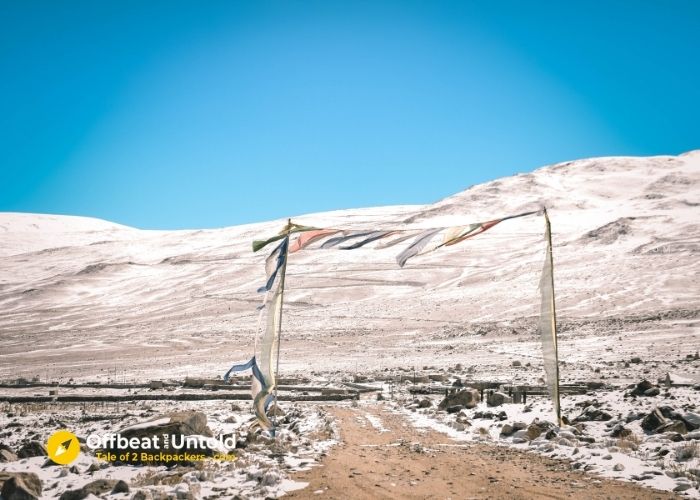
We could only go till Puga. The road to Tso Kar was also blocked due to excessive snowfall. At Puga we met several other Changpa families. Most of them were busy bringing back their flocks back to the safety of their home.


At Puga, we saw several permanent settlements (concrete houses). These houses are built by the government as an accommodation for the Changpas. However, we noticed that the Changpas lived in their makeshift tents and hardly utilized these structures.
We also saw a school in the middle of nowhere in Puga. It was the Nomadic Residential School built for providing education to the Changpa children. But the school was closed at that time.

It was snowing so heavily that we could not even visit the Puga Hot Water Springs. With a heavy heart we decided to return. However, by the time we reached Sumdo, it was late afternoon and the snowfall had not stopped even for a moment. Along with the snowfall, the wind was also howling at that time. It would be risky to drive in such weather. So, we decided to stay at Sumdo.
Amidst a Snow-covered Wonderland
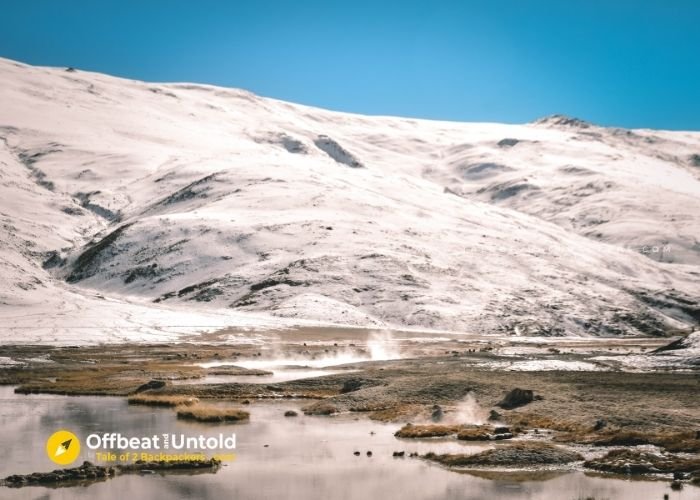
By the time we reached Sumdo, it was indeed like a snow-covered wonderland. It was white and white wherever we looked with angry grey clouds hovering at the dark sky. The entire atmosphere looked ominous, as if warning us of some catastrophe. In such a situation, we started looking for a place to stay at Sumdo.
There is a homestay at Sumdo on the road towards Tso Moriri. It is a basic one with an attached toilet. However, the homestay owner demanded four thousand rupees for night stay. We felt that the price was a bit steep even though the situation was dire.
At Changthang

Tashi took us to another place. It was the home of a Changpa family. With their small tent, they also have a little shop selling tea and maggi. They opened up their home for us to stay the night. Tenzin and Dolma provided us with stay, food and lots of warmth. The only problem was the toilet was outside and we had to wade through a few inches of snow to reach the toilet. But I did not want to lose the opportunity to stay with a Changpa family and so we stayed with Tenzin and Dolma.
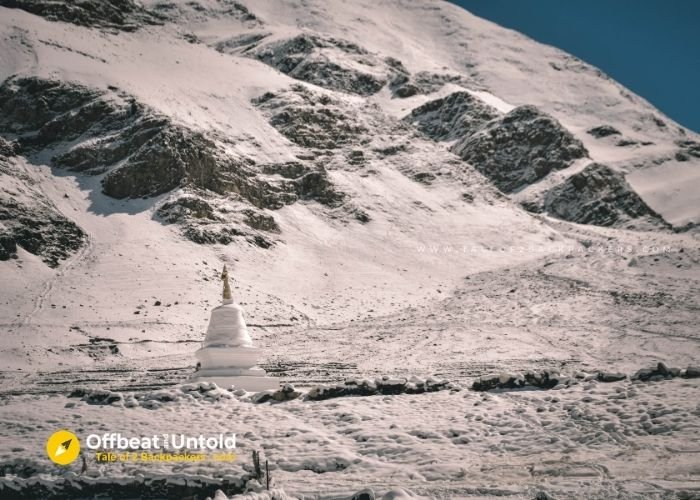
Sumdo also has a number of Changpa families. We could see herds of goats, sheep and yaks on the white mountain slopes all returning back. The herds looked like small specs on the vast white canvas of the mountains. Everywhere it was white. The houses were covered with snow and so were the cars and the JCB stationed there. I kept wondering what would happen if the snowfall continued!
Staying with the Changpas
The Changpas usually stay in hexagonal tents called Rebos made of thick Yak wool. Their world is inside these mobile homes. We huddled inside our makeshift home with blankets, our sweaters and jackets and woollen hats. We also had several blankets, but even then, the cold was biting and I was literally shivering. Soon Dolma provided us with a cup of butter tea. Although I am not very fond of butter tea, it was definitely the need of the hour.
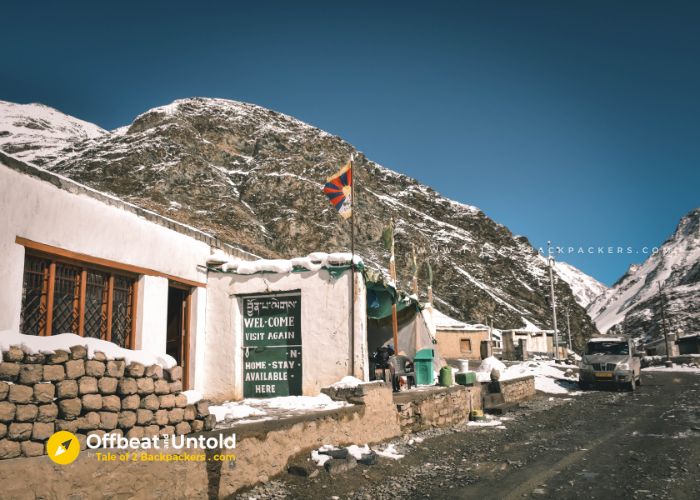
The evening was spent huddled inside our stay. Later we went to meet Tenzin and Dolma to learn about their lifestyle at Changthang Valley. Any problem of understanding each other because of language was solved by the presence of Tashi.
We all sat down together and talked about our lives. Tenzin and Dolma spoke about their goats. They have 250 goats and some sheep. They talked about their life, their hardships. But they were content. Tenzin had a prayer wheel in his hand and was continuously spinning it. Being Tibetan Buddhists, the Changpas are deeply religious as well as kind to their bones.

Tenzin also told us about their decreasing income from their Pashmina goats. He hardly earns enough in a year from the Pashmina wool for sustenance. That is why he also opened up a shop.
Tenzin and Dolma have 2 sons and 2 daughters who have gone to Leh and Dharamshala for education and job. They do not wish to come back and take the mantle of shepherding the Changthangi goats from their father. They are happy in Leh. Infact, their sons want them to come and stay with them in Leh. But Tenzin still wants to rear his goats. He does not want to abandon the age-old art of producing the Pashmina wool. He wants to stay there and work as long as his health would allow him to do so.
We had Thentuk for dinner. Dolma and her sister were preparing the dinner and she also showed me how to cook.
Life of Changpas at Changthang

Tenzin, like the other males of a Changpa family leaves in the morning with his herd of sheep, goats and yaks to search for pastures for grazing. They have to cross mountains to look for proper pastures. Once he finds a suitable place, he leaves his herd to graze while he himself sits and relaxes. He often makes tea and sings songs. But he has to keep a close eye on his herd so that they do not stray elsewhere. Late afternoon, he returns back to his house with his herd.
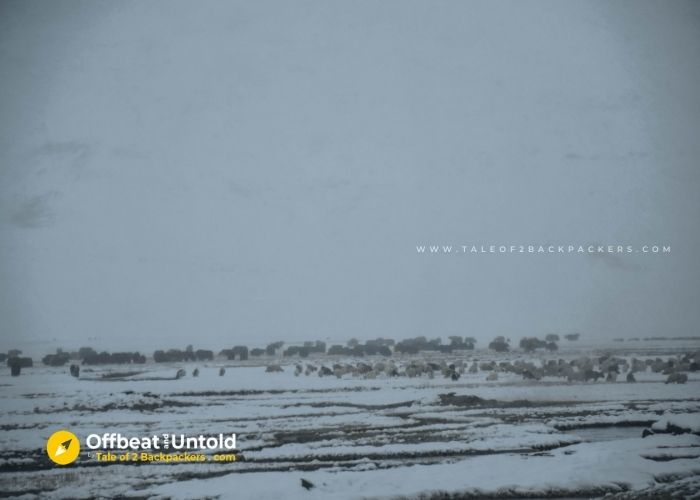
The Changpas keep on moving from place to place with all their belongings as the weather changes. They do it in order to find proper pastures for their herd.
Meanwhile, Dolma works at home. She cooks and cleans, and takes care of their dog. Dogs are quite important here. These are wild dogs who look after the herds at night keeping away wild wolves and snow leopards.


Dolma also looks after the shop. In spare time, she also weaves. Dolma’s sister, who also stays nearby, is a primary school teacher at Sumdo.
If you want to know more about the lifestyle of the Changpa tribe and their relation with the pashmina goats, please head over to our blog on the Changpas of Ladakh.
Our Time at Changthang
The night was biting cold with the wind howling like a banshee. After dinner, the excitement of the day caught up with us. We were tired to the bone and simply went off to sleep. Yes, going to the toilet required quite a bit of effort!

We woke up to a bright morning the next day. The sky was azure with the sun shining brightly. Who would say that the weather was so horrible the previous day! We could say it snowed only by seeing the blanket of white in front of us.
Tenzin was getting ready to take his herd for grazing. Dolma was preparing breakfast. Tashi was trying to kickstart the engine of our car.

We looked around the white landscape. It seemed surreal looking at all the snow. We went outside the tent to take a walk around the place. We saw the Changpa shepherds taking their herds across the mountains in search of pastures. Life was once again normal.
Failed Trip to Tso Moriri
In the meanwhile, Tashi brought us the news that the road to Tso Moriri is still closed. That meant that Tso Moriri once again eluded us.

Since we would not be able to go to Tso Moriri, we decided to carry on towards Tso Kar in Rupshu valley and then carry on towards Leh. We started after having breakfast, when the roads seemed to be clear of snow.
After Puga, there was a dirt track and a few turns. Tashi was driving carefully, but despite that our car was skidding along the dirt road. We went forward a few kilometers after which the road condition was too pathetic with snow and dirt. The weather seemed to change also. At a distance we could see a snow storm. It looked risky to go ahead.

Within a few moments, the weather changed drastically. Once again snowflakes were falling on us. We decided not to risk ourselves and returned back to Sumdo. Once we reached there, it started snowing again. We went back to Dolma’s place and Tashi went ahead to know about the road conditions towards Leh.
Back to Leh
Tashi came back with the news that we might be able to get back to Leh if we started soon. And if it snows like this, it would be difficult for us to return back to Leh as well. This time, we took a quick decision and decided to return back to Leh. After all, leaves were limited and we had to be back home.

We started from Sumdo, went back the same way facing snow and rains. By the time we reached Leh, it was almost evening. The sky gave in to a brilliant shade of golden yellow.

In Conclusion
We returned back to Leh with a mixed feeling. There was a slight disappointment of failing to visit Tso Moriri again. But there was also a happiness to experience that lifestyle of the Changpas. It is not everyday one gets invited into a Changpa household. And neither does one living in a hot, humid tropical city get to experience such glorious snowfall. I would say, it was definitely a successful trip. We will visit Tso Moriri next time. It gives us a reason to visit Ladakh again! What do you say?
Changthang Valley in Photographs

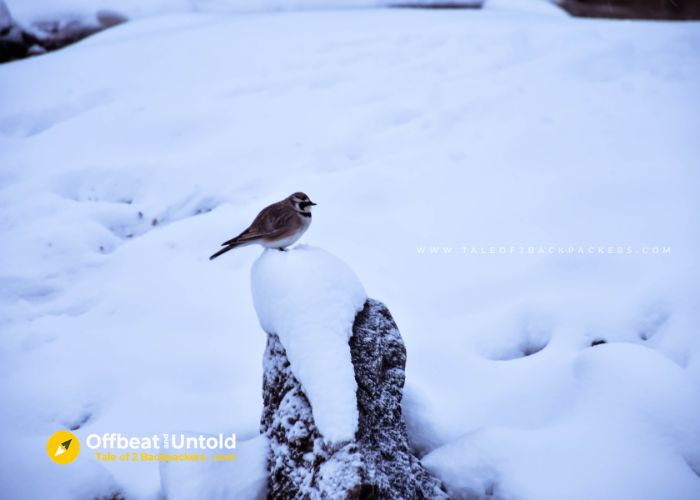



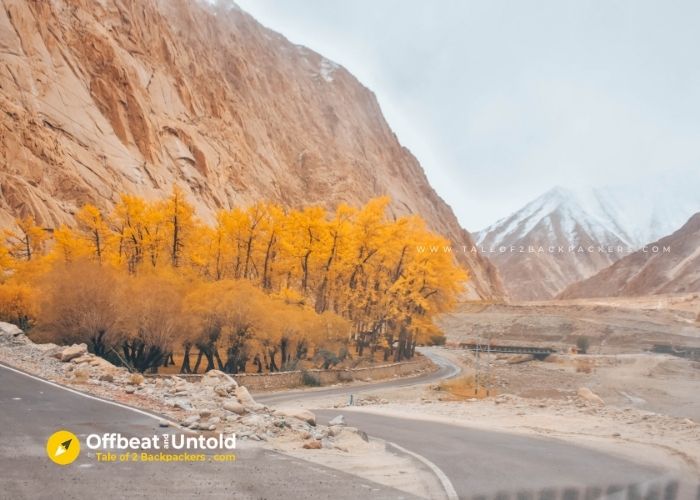



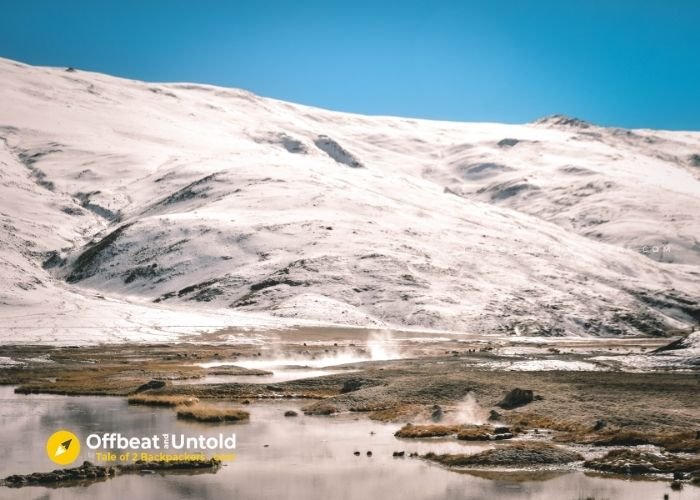
Hope you liked this article on our experience about Changthang Valley. Have you visited the place yet. Let us know in comments below.
Pin it for a later read!
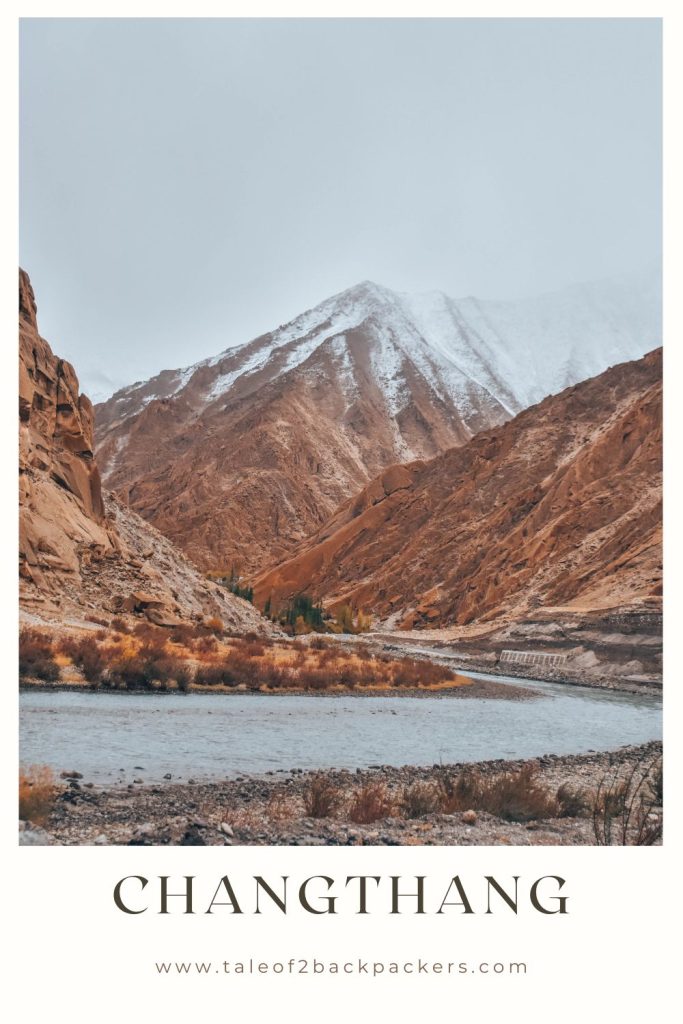


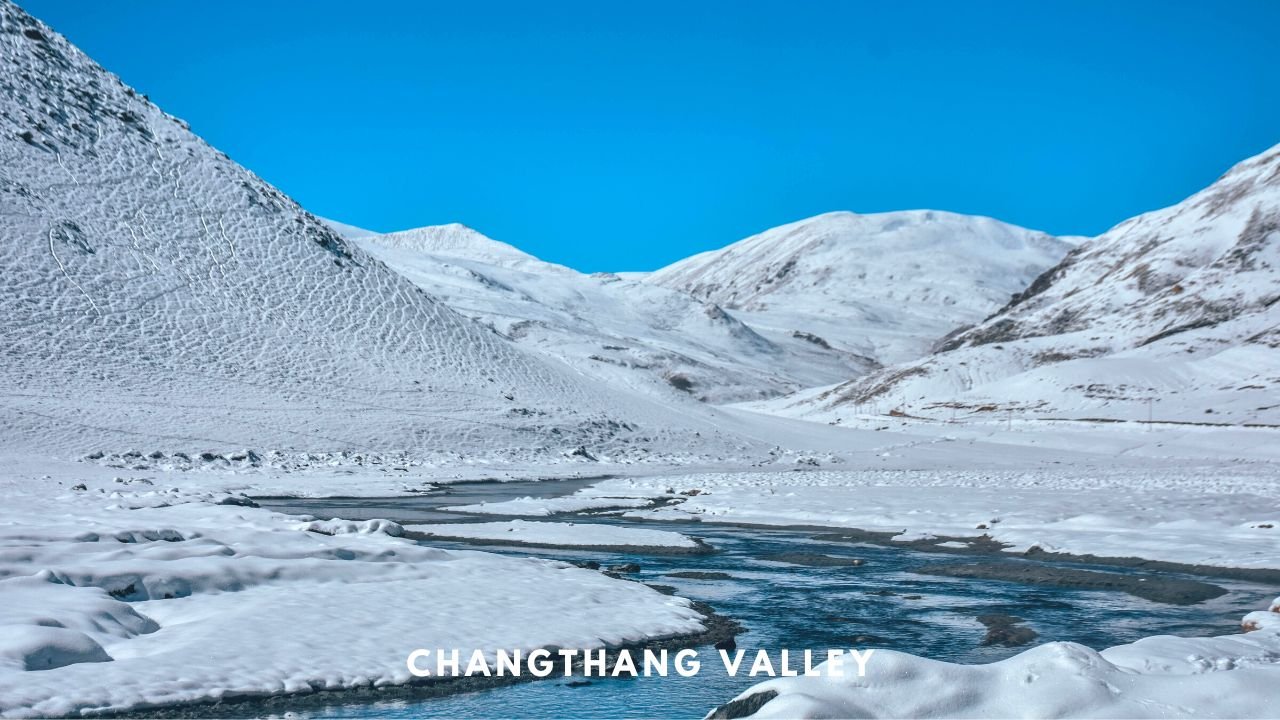

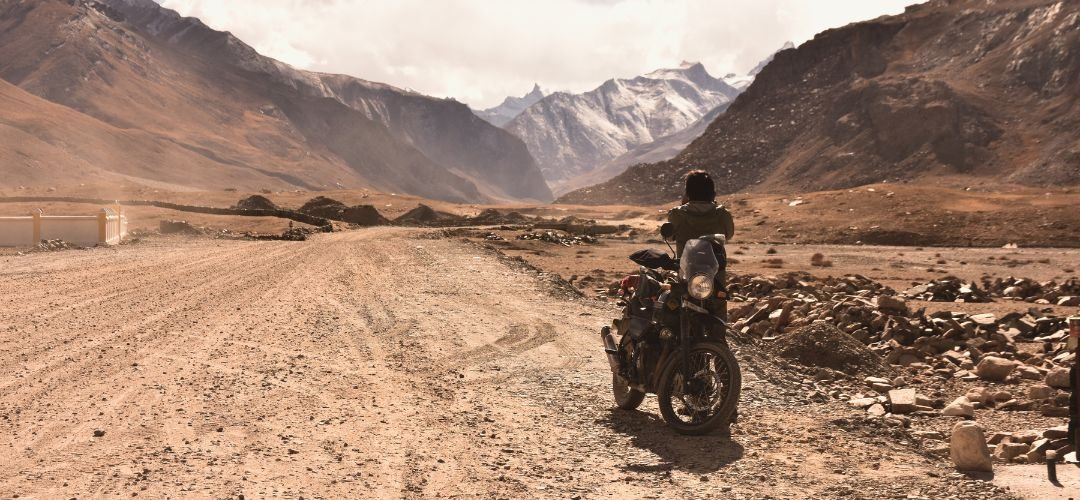
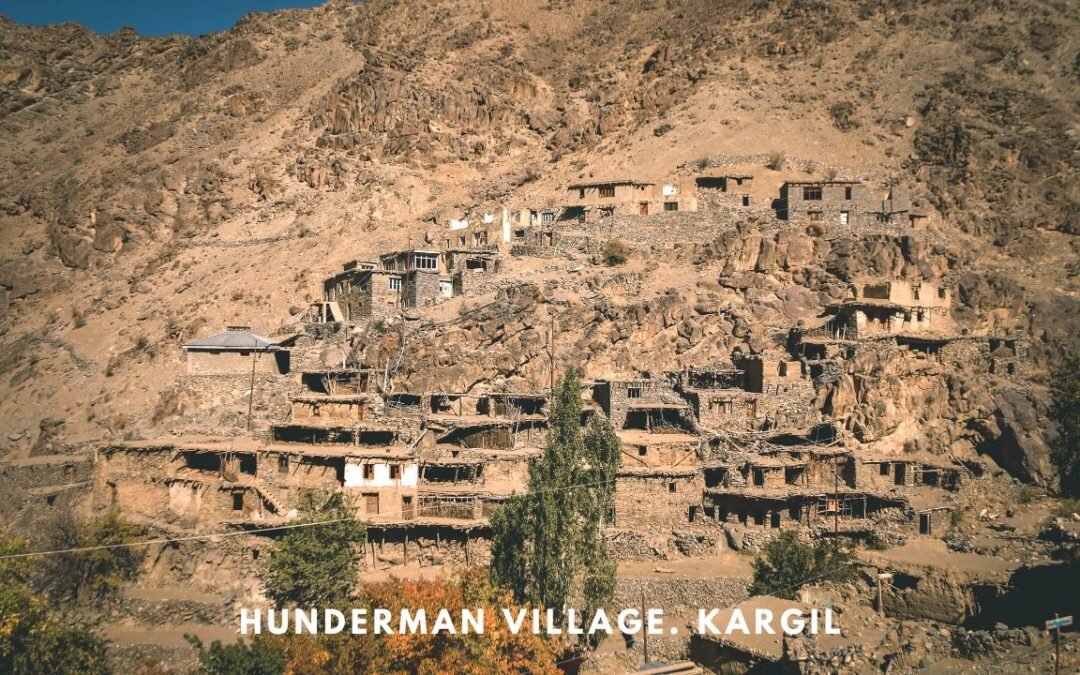
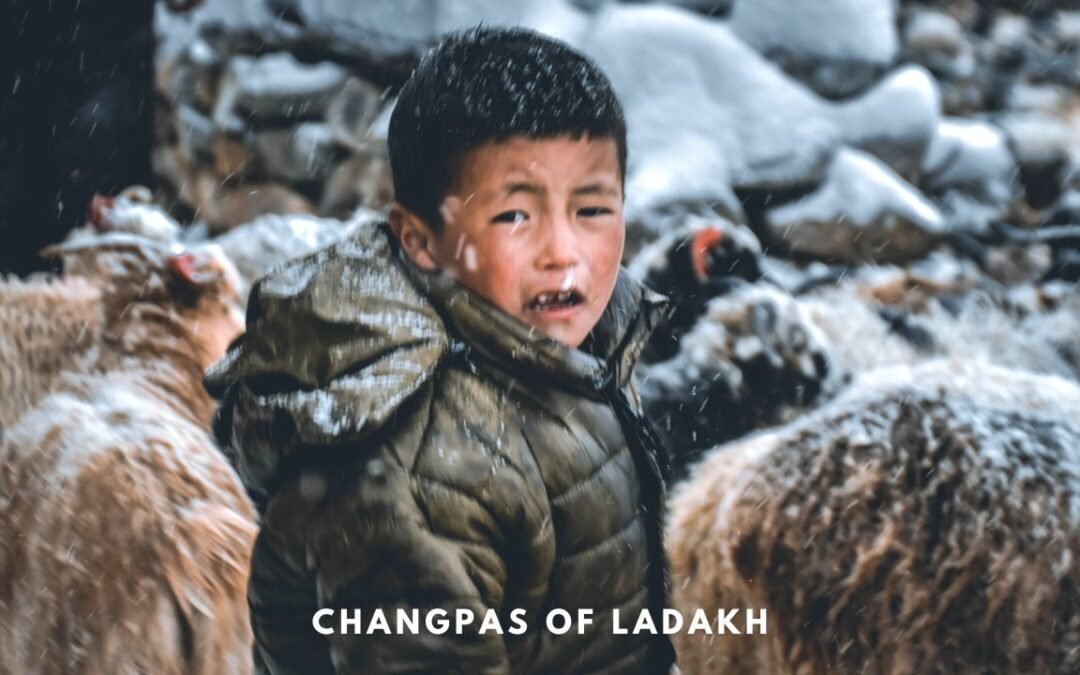


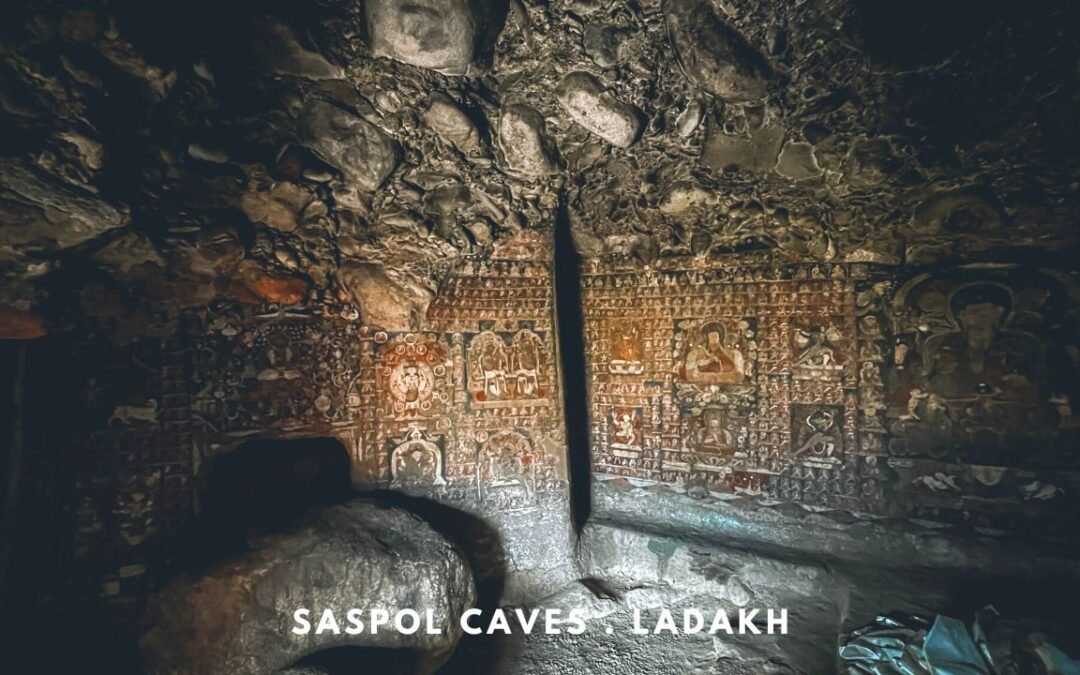


The mountain pictures are looks awesome. Nice article
Thank you!
I’ve been actively seeking this kind of informative content. Thanks.